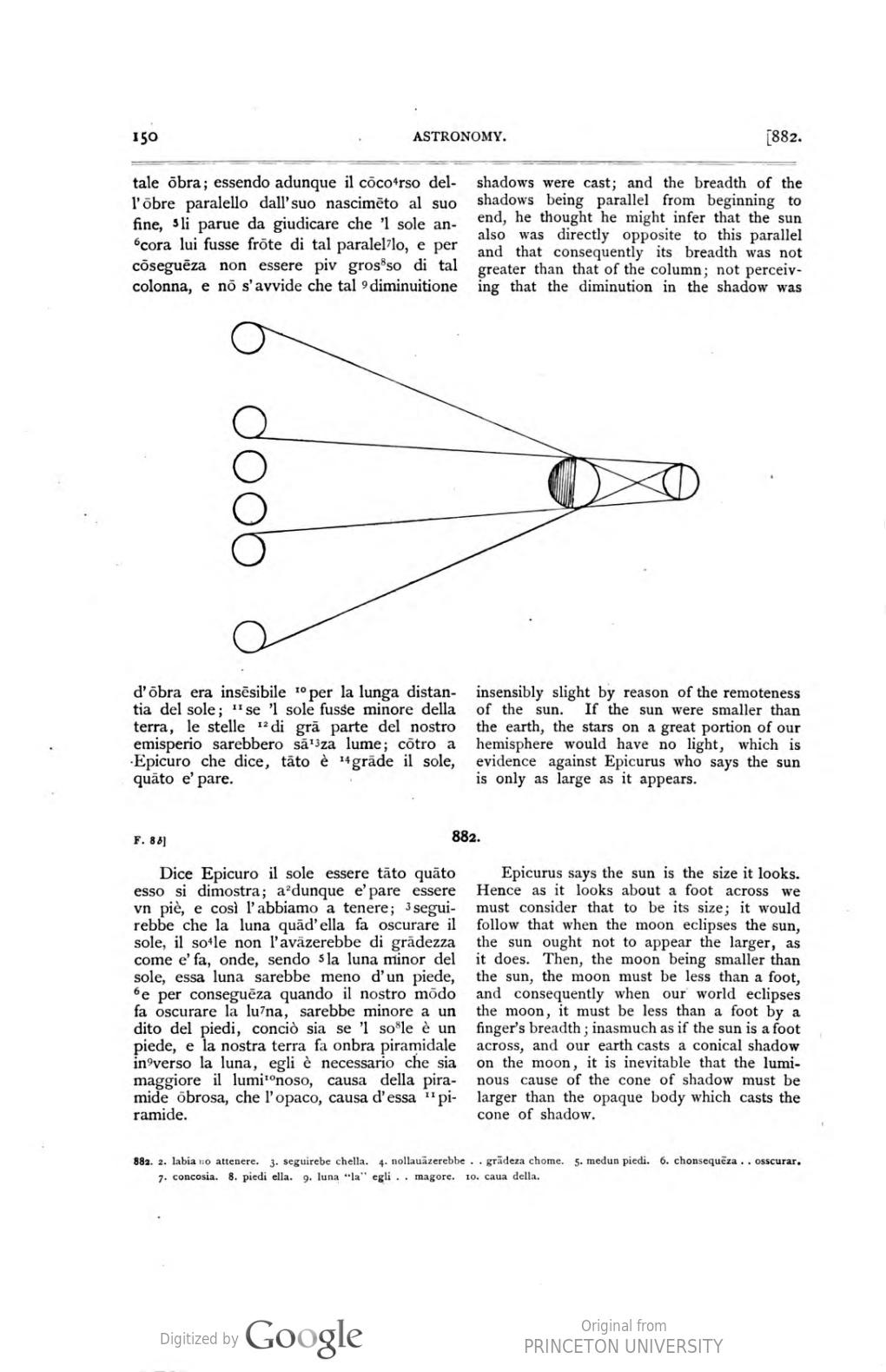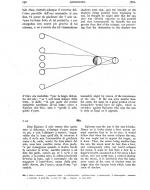Created by Jacob Halpern on Thu, 02/06/2020 - 22:01
Description:
Much of the knowledge and focus of astronomy during Leonardo’s time was on the Sun and Moon. Regarding the Sun, da Vinci spent much of his time attempting to define its characteristics through his knowledge of optics. Using his principle that stars gained their light by reflecting the sun’s light, Leonardo proved that the sun was not a foot in length (as previously suggested by Epicurus), as he roughly knew the size of the Earth, and inferenced that a small sun would mean that very few stars would receive sunlight outside the shadow of the Earth, leaving the night sky mostly black. This proposal is illustrated in the gallery image, where the left circle is the sun, the center is the Earth, and the left represent stars. He also cites that the moon would also need to be small, as the sun appears smaller than the sun during an eclipse. To look at a solar eclipse with the naked eye, da Vinci proposed an experiment very similar to the popular method used today: poking holes into a surface and observing the sun through them, restricting the amount of light that can reach your retinae. Along with its size, da Vinci stated that the Sun must generate its own radiance (rather than reflect), due to its affect on mirrors. While mirrors themselves are cold, they reflect a brilliant warm light, which Leonardo concluded must be due to the Sun itself being hot to release warmth.
Works Cited:
Drawing found in Leonardo’s Notebooks, XV. Astronomy, Book II: The Sun
Leonardo, & Richter, Jean Paul. (1883). The literary works of Leonardo da Vinci. S. Low, Marston, Searle & Rivington.
Copyright:
Associated Place(s)
Part of Group:
Featured in Exhibit:
Artist:
- Leonardo da Vinci


